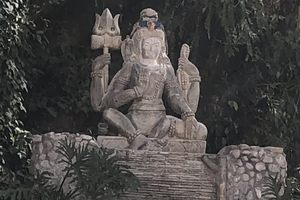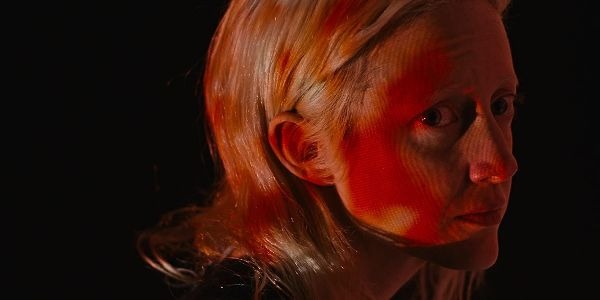Shiva Statue in Shankharapur, Nepal

Not far from the headwaters of the Manohara River, Shiva sits overlooking a sacred spot marked by the Swasthani Mandir. It was here that Parvati fasted and endured extraordinary hardships in an effort to charm a grieving Shiva to become her husband.
As the story goes, Shiva was in mourning after the death of his first wife, Sati. While he was secluded the demon Tarakasura, who could only be killed by a son of Shiva, ran amok. The other gods implored Shiva to leave his retreat, marry Parvati (an incarnation of Sati), and produce a son that could stop the rampaging Tarakasura.
Shiva eventually relented, but tested Parvati’s devotion through multiple trials performed along the banks of the Manohara River. Revealing herself to be steadfastly faithful, Shiva married Parvati and their son, Kartikeya, vanquished the demon.
The rituals performed by Parvati are associated with Swasthani, the goddess of good fortune, and the nearby temple is named in her honor. Every year between the full moons of January and February, thousands of women gather at the temple to recite the “Swasthani Barta Katha,” a cycle of 31 stories originally narrated by Lord Kumar, a son of Shiva and Parvati. For a full month, married women fast and pray for the well-being of their husbands, while single women emulate Parvati in hopes of gaining a spouse.
The festival concludes when the women offer (among other items) 108 holy threads, 108 selrotis (ring-shaped sweet rice bread), and 108 fruits to Swasthani. Women without husbands or sons give a portion of the offerings to the river. The number 108 symbolizes Shiva’s 108 attendants. So while the goddess is worshipped for her power, it’s in the context of Shiva’s patriarchy.
As a result, the stories of the Swasthani Barta Katha are interpreted differently by different generations. But at this sacred site, tradition endures under the watchful gaze of Lord Shiva.





